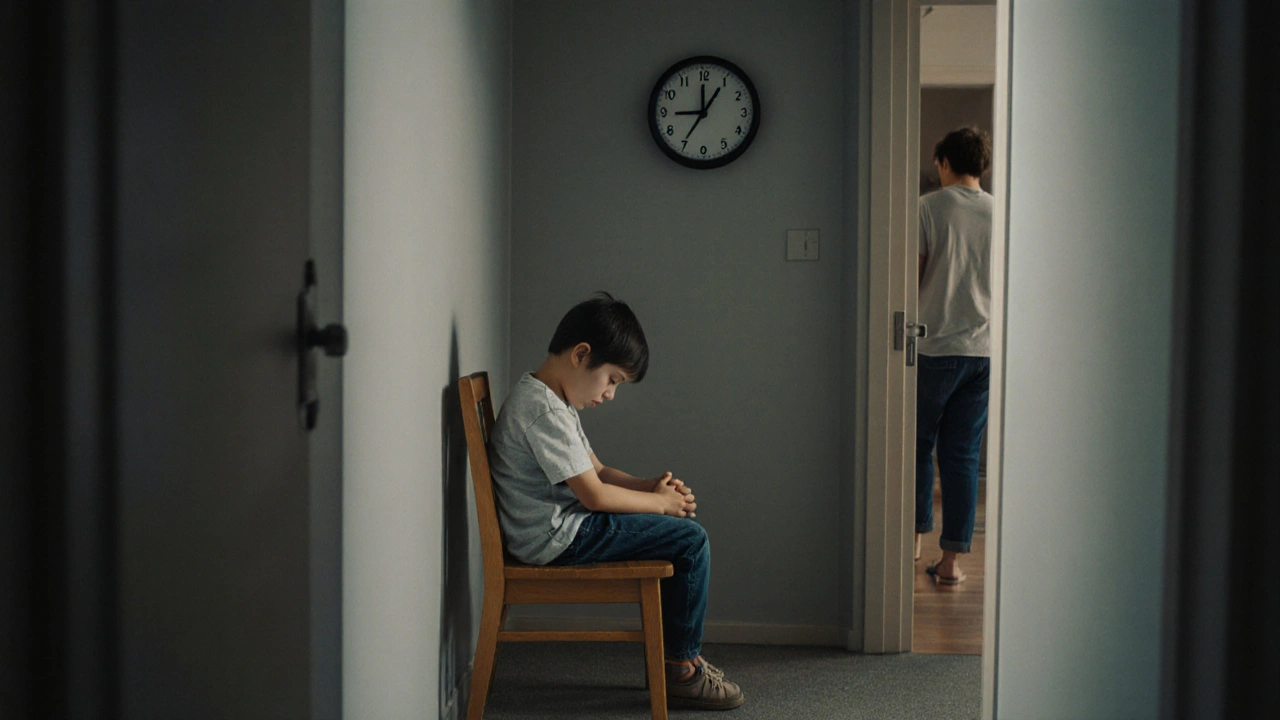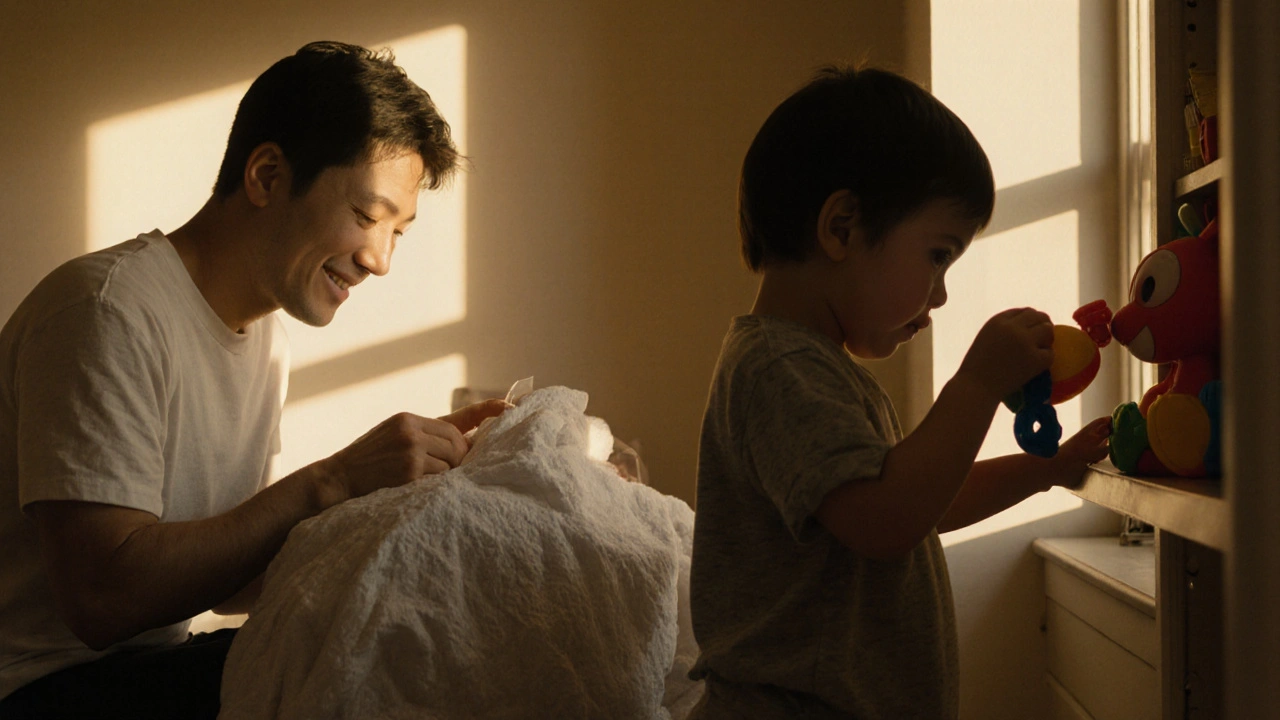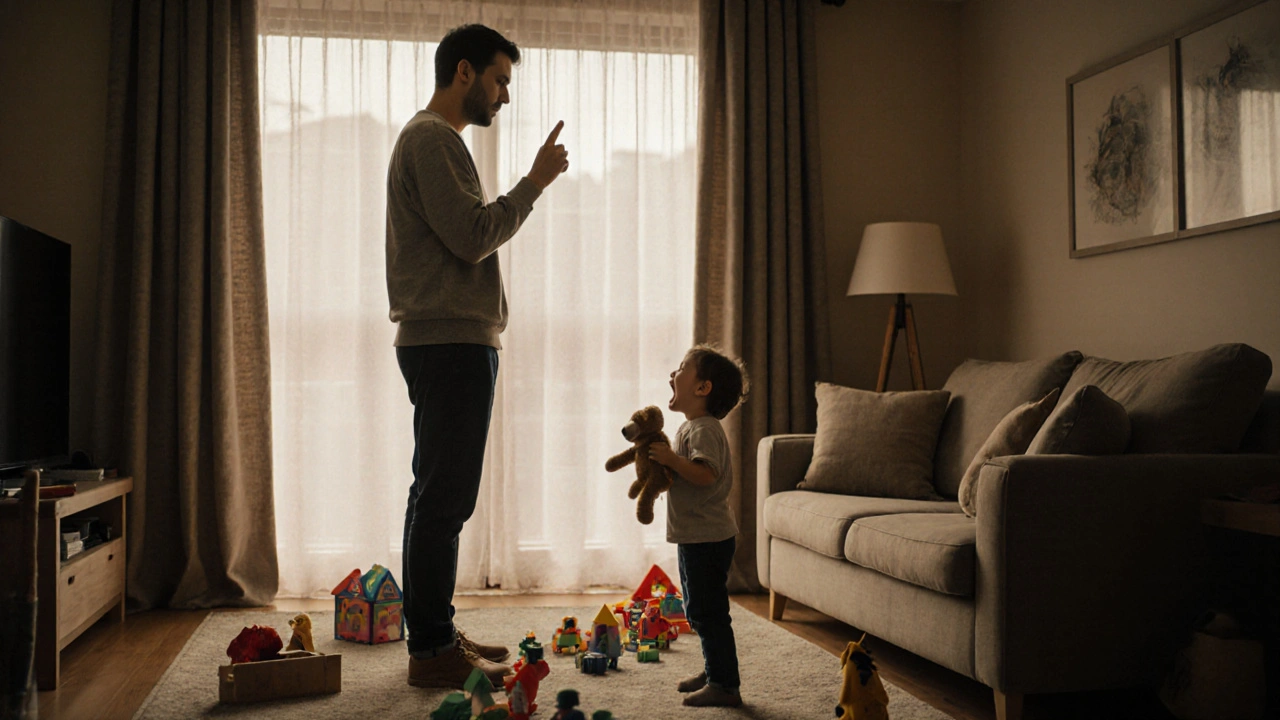Ever feel like you're yelling just to get your kid to put on their shoes? Or maybe you've counted to ten a hundred times, and nothing changes? You're not alone. That’s where 1-2-3 Magic comes in - a simple, proven method that cuts the yelling, stops the power struggles, and helps kids actually listen.
Created by clinical psychologist Dr. Thomas Phelan in the 1990s, 1-2-3 Magic isn’t magic in the trick-sense. It’s magic in the way it works - quietly, consistently, and without drama. Parents who use it say their homes feel calmer, their kids behave better, and they actually enjoy being around their children again.
What Are the Core Rules of 1-2-3 Magic?
The system has three clear rules. That’s it. No complicated charts, no reward stickers, no lectures. Just three steps you repeat every time your child misbehaves.
- Count to one. When your child does something you don’t like - hitting, throwing toys, refusing to clean up - you say, “That’s one.” Say it calmly. No yelling. No facial expressions. Just like you’re telling them the time.
- Count to two. If the behavior continues, say, “That’s two.” Again, flat tone. No warning. No negotiation. This isn’t a reminder. It’s a signal that you mean business.
- Count to three. If the behavior still hasn’t stopped, say, “That’s three.” Then, immediately follow through with a time-out. No discussion. No “why are you doing this?” Just walk them to their time-out spot.
That’s the whole system. Three counts. One consequence. Done.
Why This Works Better Than Yelling or Nagging
Most parents default to yelling because it feels like the only way to get attention. But here’s the truth: yelling teaches kids to tune you out. The louder you get, the more their brain shuts down. They hear noise, not instruction.
1-2-3 Magic flips that. It removes emotion from the equation. When you say “That’s one,” you’re not angry. You’re not disappointed. You’re not pleading. You’re just stating a fact. And kids respond to facts, not feelings.
Think of it like a vending machine. You put in a dollar, you get a snack. You put in two dollars, you get two snacks. In 1-2-3 Magic, the behavior is the dollar. The count is the machine. The time-out is the snack. No drama. No surprises. Just predictable results.
Studies from the American Psychological Association show that consistent, predictable consequences reduce oppositional behavior in children by up to 70% within four weeks. That’s not hype - that’s data.
How to Do Time-Outs Right
Counting only works if you follow through with time-outs. And not just any time-outs - the right kind.
Here’s how:
- Length: One minute per year of age. A 4-year-old gets 4 minutes. A 7-year-old gets 7.
- Location: A quiet, boring spot. Not their room with toys. Not the kitchen where you’re cooking. A chair in the hallway or a corner with no distractions.
- Start time: The clock starts when they’re calm and sitting still. If they jump up, say, “You’re not done,” and restart the timer.
- No talking: Don’t explain. Don’t lecture. Don’t say, “I told you so.” Just sit quietly. If they talk, ignore them. If they scream, wait it out.
After time-out, you’re done. No “I’m proud of you for being good now.” No hugs. No “you’re a good kid.” Just go back to what you were doing. The goal isn’t to make them feel guilty. It’s to teach them that behavior has consequences.

What About Good Behavior?
You might wonder: What about praising good behavior? Shouldn’t we reward kids when they’re nice?
Yes - but not the way you think.
1-2-3 Magic says: Don’t overdo praise. Don’t turn every small win into a celebration. Kids don’t need constant validation. They need to know what’s unacceptable.
Instead, focus on ignoring minor misbehaviors. If your child whines for a snack, don’t respond. If they interrupt you on the phone, wait. If they roll their eyes, look away. The absence of attention is often more powerful than any reward.
When they do something genuinely good - like sharing a toy or helping without being asked - you can say, “Thanks for helping.” That’s it. No fireworks. No trophies. Just quiet acknowledgment.
Common Mistakes Parents Make
This system sounds simple. But it’s easy to mess up.
Here are the top three mistakes:
- Counting too fast. You say “one,” then “two,” then “three” in five seconds. That’s not a count - that’s a tantrum. Pause. Wait. Let them process. Give them time to stop.
- Letting them off the hook. “I’ll count to three… but only if you clean up.” That’s bargaining. It teaches them they can negotiate with you. No bargaining. Ever.
- Counting when you’re mad. If you’re yelling, you’re not using 1-2-3 Magic. You’re just yelling louder. Take a breath. Lower your voice. Say “That’s one” like you’re reading a grocery list.
One parent told me she started using 1-2-3 Magic after her 5-year-old threw a plate across the room. She counted to three, put him in time-out, and then sat down and cried. She said, “I didn’t realize how exhausted I was from yelling. This system gave me back my calm.”

When It Doesn’t Work
It’s not perfect. There are days when your kid ignores all three counts. Or they scream through the whole time-out. Or they start hitting you when you say “That’s one.”
That’s normal.
1-2-3 Magic works best when it’s consistent - not perfect. If your child escalates, stay calm. If they hit, say, “No hitting,” and walk away. Then count again. If they keep pushing limits, increase the time-out length slightly. Or move them to a more boring spot.
It also doesn’t work if you’re inconsistent. If you count to three on Monday but yell on Tuesday, your child will learn that you’re unpredictable. And unpredictable adults = anxious kids.
Stick with it for at least three weeks. That’s how long it takes for the brain to rewire - yours and theirs.
Who Is This For?
1-2-3 Magic works best for kids ages 2 to 12. It’s designed for everyday misbehavior: tantrums, defiance, refusal to listen, sibling fights, homework battles, bedtime resistance.
It’s not for severe behavioral disorders, trauma, or autism spectrum disorders without professional guidance. But for most families dealing with normal childhood defiance? It’s one of the most effective tools out there.
And it doesn’t cost anything. No apps. No books you have to buy. Just you, your voice, and the courage to stay calm when your kid is losing it.
What Happens When You Stick With It?
After a few weeks, something shifts.
You notice your child pauses before doing something they know they shouldn’t. They look at you, hear “That’s one,” and stop. No yelling. No tears. Just a quiet reset.
You start to feel less stressed. Less guilty. Less like you’re failing.
Your child still makes mistakes. But they’re learning. And you’re not screaming anymore.
That’s the real magic.


Destiny Brumbaugh
November 10, 2025 AT 08:39Sara Escanciano
November 10, 2025 AT 17:14Elmer Burgos
November 11, 2025 AT 09:08Jason Townsend
November 13, 2025 AT 01:54Antwan Holder
November 14, 2025 AT 10:15Angelina Jefary
November 16, 2025 AT 05:25Jennifer Kaiser
November 17, 2025 AT 10:26TIARA SUKMA UTAMA
November 18, 2025 AT 16:53Jasmine Oey
November 19, 2025 AT 08:33Marissa Martin
November 20, 2025 AT 10:33Ashley Kuehnel
November 21, 2025 AT 22:08Denise Young
November 23, 2025 AT 11:16Sam Rittenhouse
November 23, 2025 AT 22:38